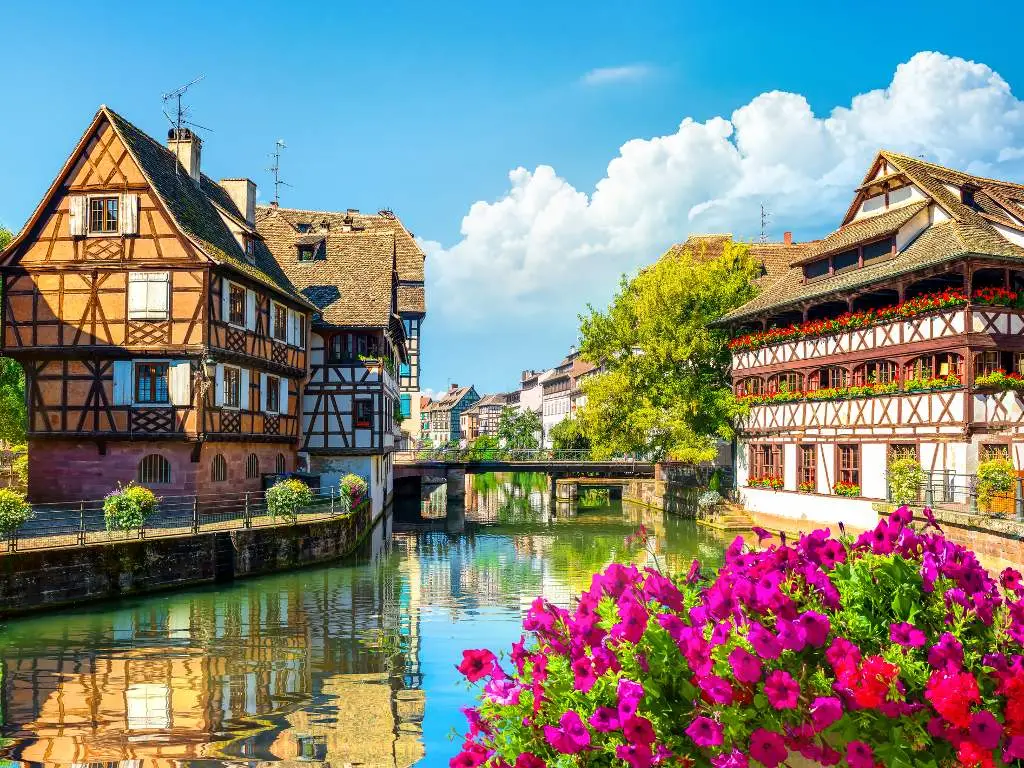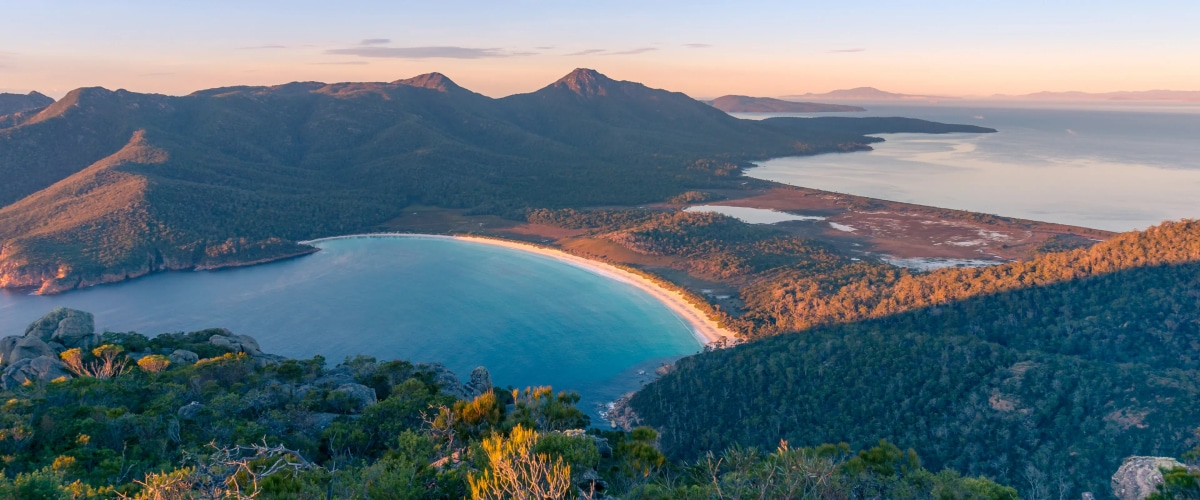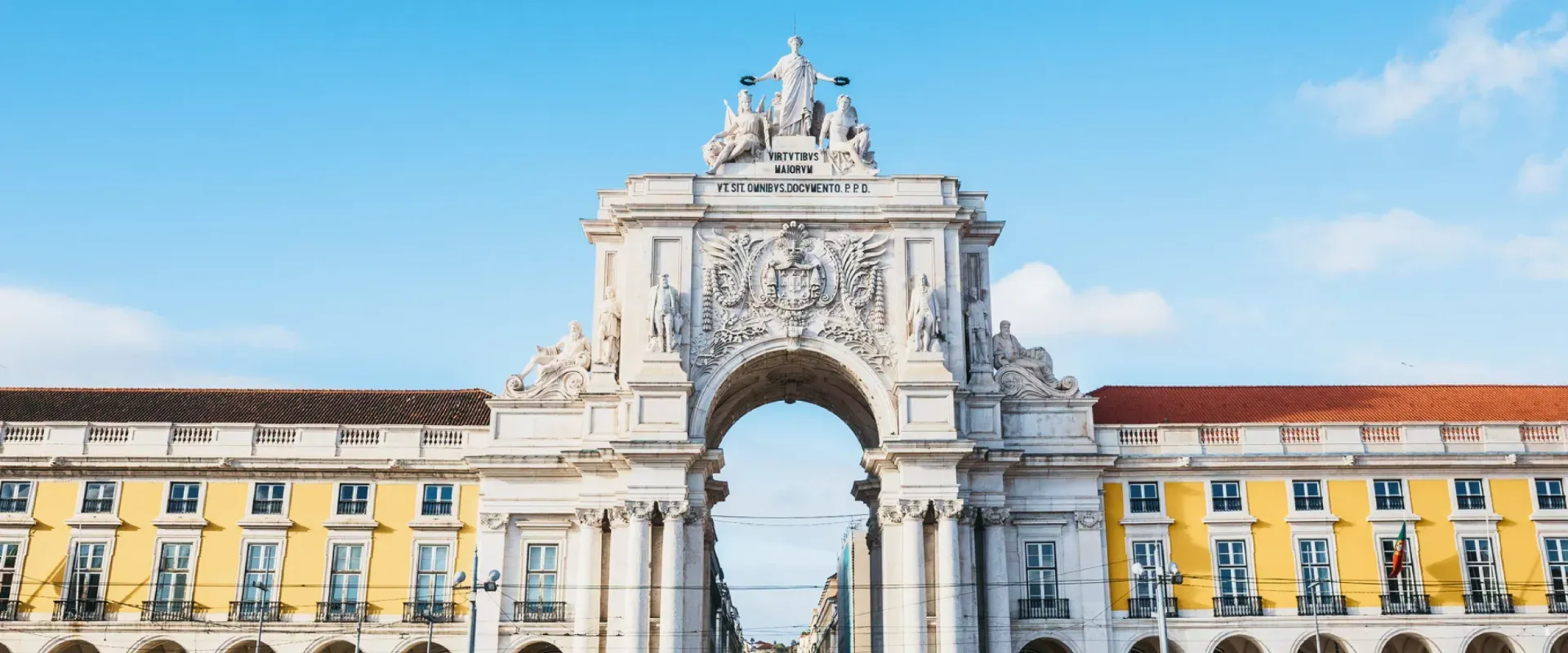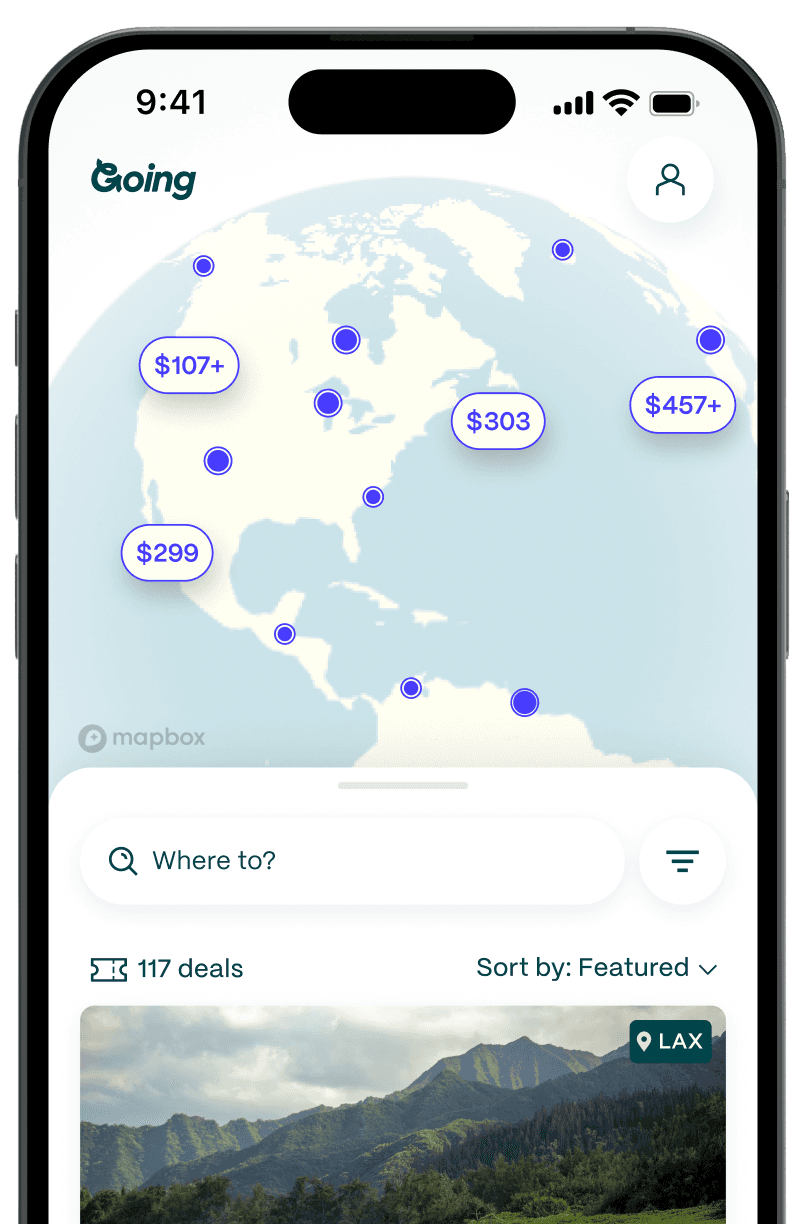
Finland: The Nordic Country Home to Sauna and Santa Claus
Finland boasts tranquil forests and over 188,000 freshwater lakes. Even in the cities, nature is always just around the bend, like a well-behaved forest photo bomber. There is so much nature, in fact, that there are only 5.5 million inhabitants in this vast expanse that ranks Europe’s eighth-largest country by area.
Finland is surrounded by the Baltic Sea to the south, where Helsinki and neighboring cities Espoo and Vantaa grace its shores. To the west, the Gulf of Bothnia cradles its coastline, where Turku has held strong since medieval times. Inland, the lakeside cities of Tampere, Lahti, and Jyväskylä punctuate the landscape. The pulse of urban life in Finland beats down here, below the Arctic Circle. In the northern reaches lies Lapland, bordered by Sweden, Norway, and Russia. Despite its vast size, Lapland, which makes up almost a third of the country, is home to fewer than 200,000 inhabitants—reindeer outnumber cars on the roads.
The Nordic country did a 600-year stint under Sweden before falling to the Russian Empire for about a century, adding a touch of Eastern and Western European flair to its already eclectic personality. Since its independence in 1917, Finland has come into its own, and now the country is famed for its stability and serenity.

Seize the day in seaside cities
While Finland isn’t exactly synonymous with beach vibes, some of the country’s most-loved cities are located along its 2,760-mile coastline. (Full disclosure: The mileage can add up to 28,000 depending on how you measure the islands.) These include the capital, Helsinki, as well as the medieval capital, Turku, both of which have artfully harnessed the beauty of their seaside settings.
In Helsinki, it’s possible to cross bridges or ferry hop to many of the city’s 300-plus islands, the biggest draw being the Suomenlinna sea fortress, which is a UNESCO World Heritage Site. While summer is the most popular time to visit Suomenlinna, the island is accessible by ferry even in winter when the sea freezes. In Turku, you can cruise along the 155-mile-long Archipelago Trail either with a bike or a car and fall in love with the rural seaside setting; red fishing huts dot the coast, and tiny harbors and villages put up a feast of local produce.

A steamy sauna tradition
The Finns are pioneers in harnessing the rejuvenating power of hot stones and steam. In its nascent form, the sauna was a modest hole in the earth, with a mound of heated stones on the bottom. During the Iron Age, the Finns began crafting sweat lodges made of logs, earth, and moss. More modern takes on these smoke saunas, known as savusauna, still exist. In Lapland, you can visit the Kiilopää smoke sauna and have a mid-sauna dip in a river that runs next to it.
You don’t need to go all the way to Lapland to find a Finnish sauna, though. Today, the country of five million inhabitants has three million saunas; in fact, the Finnish sauna is on the UNESCO Intangible Cultural Heritage List. Visit one of Helsinki’s many public saunas, or head to Tampere, the sauna capital of the world.
As with all cherished rituals, there are some rules to follow when visiting a sauna in Finland. First, take a pre-sauna shower. Although the sauna is typically entered naked, wrapping up in a towel is acceptable. Some saunas permit swimwear, but it’s generally a no-go for hygiene reasons. Inside, temperatures normally hover between 180–200°F (80–100°C). If there is a pool, lake, or sea nearby, it is customary to take dips between bouts of löyly (steam). In winter, the truly intrepid might even indulge in a brisk roll in the snow or a plunge in an ice hole.

Functionality and whimsy in Finnish design
After Finland declared independence from Russia in 1917—and especially after emerging from World War II—the country was tasked with making a name for itself. Employing a great amount of experimentation, innovation, and patriotism, the nation's biggest artists, designers, and architects transformed Finland into a creative epicenter, where an appreciation and respect for nature are consistently at the forefront.
Many household names were actually born on Finnish soil: the orange-handled Fiskars scissors, Nokia phones, Angry Birds, and the tech-savvy Oura rings that track sleep and physical activity. The Finnish design house Marimekko was founded in Helsinki in 1951; its clothing and household products, characterized by bright colors and graphic floral prints, are known and sold around the world. The Marimekko flagship shop makes for a great pit-stop if you’re exploring the capital.
One of the most well-known Finnish designer-architects is Alvar Aalto, whose buildings make up the skylines of many Finnish cities. Near his home city of Jyväskylä, see the Muuratsalo Experimental House, and in Helsinki, visit Studio Aalto and The Aalto House.

Happiest of them all
In 2023, Finland was named the happiest country in the world for the sixth year in a row by the U.N.’s World Happiness Report, which measures health, income, and social support. While there is no shortage of things in Finland that spark joy, there are certain facets of local culture that help facilitate it, including (but certainly not limited to) access to education and nature.
Education—from first grade through university—is tuition-free. Finland’s education system also happens to meet some of the world’s highest standards; students who attend Finnish schools regularly test well above the OECD standard, according to a global study by the Organisation for Economic Co-operation and Development.
Another important factor for happiness in Finland is the omnipresent lush nature that helps alleviate stress. In addition to spending copious amounts of time amongst the country’s green spaces, some people take nature a step further, and rigorously practice ice hole swimming, vowing for its beneficial boost on happiness and health levels.

Wilderness areas and wildlife huts
Finland has 41 national parks; these sanctuaries span from easily accessible parks, such as Nuuksio near Helsinki, to Lapland, which is widely considered some of Europe’s last wild, uncultivated land. In fact, there are about 15,000 square kilometers of true wilderness left in Finland, all located in northern Lapland.
Luckily, enjoying nature is not restricted to the national parks, as everyone (locals and visitors alike) has the right to camp, forage, and even fish with a rod. Just don’t pitch your tent too close to private homes, and leave no trace of your sojourn.
Finland’s (nightless) nights in summertime also offer a unique setting to spot wildlife, especially in the eastern part of the country. Rent a forest hut, and see bears, wolves, and wolverines rambling around their nighttime kingdoms. You can also head to southeastern Finland and take a day-time boat ride on Lake Saimaa, Finland’s largest lake and the fourth-largest natural freshwater lake in Europe, with its maze of over 13,000 islands. It’s often possible to see one or two of the endangered Saimaa ringed seals basking on the rocks here. Apart from pristine nature, there are also quaint cities such as Savonlinna, Mikkeli, and Lappeenranta to explore along Saimaa’s shores.

A frosty fairyland
Winter in Finland is a symphony of snow and serenity. The Northern Lights can often be seen on brisk, clear nights in both Lapland and farther south all the way to Helsinki. In Rovaniemi—the capital of Lapland and official home of Santa Claus—you can see reindeer and opt for a husky sleigh ride.
In larger cities like Helsinki, Turku, and Tampere, Christmas markets abound with festive cheer, while in smaller cities, such as Porvoo’s Old Town (a 30-minute bus ride from Helsinki), you can sip warm mulled wine (known as glögi), wander its cobblestone streets, and admire quaint wooden houses that seem to be frozen in time.

Prepare for salmiakki
Rye bread is a Finnish staple, its history dating back 2,000 years; it’s eaten at breakfast, for lunch at school, as an evening snack, and at any meal in between. It’s so popular, in fact, that in 2017 the humble piece of bread was voted Finland’s national food. Karelian pie—rice porridge ensconced in a delicate rye crust—is another must-try.
Also hailing from the Karelia region in East Finland, and now enjoyed throughout the country, is Karelian stew, a medley of pork and beef, or sometimes elk, lamb, or reindeer.
For those with a sweet tooth, cinnamon buns—a tasty reminder of Finland’s ties to Sweden—always hit the spot, as does squeaky cheese (a baked, mild-tasting cheese) with cloudberries that taste as refreshing as the Arctic itself. For more adventurous sweets-eaters, try salmiakki, salty liquorice renowned for its intense and polarizing taste profile; its bold and savory-sweet flavor combination challenges the customary notions of candy.

Finland on page and screen
There’s no shortage of Finnish literary luminaries. Finnish author Mika Waltari’s novel Sinuhe the Egyptian was made into a film directed by Michael Curtiz in 1954. Finnish writer Sofi Oksanen’s haunting brilliance shines in Purge, a novel that delves into Estonia’s turbulent past. And Helsinki-born Max Seeck wrote a series of nail-biting New York Times bestselling thrillers, including The Last Grudge. A popular book among Finns is Väinö Linna’s The Unknown Soldier, describing the life of soldiers fighting in World War II. The book has also inspired three films.
Perhaps one of the most beloved works, though, is The Moomins. First created by artist Tove Jansson as comic strips and books, the Moomins’ heartfelt adventures took off and have since made it on TV with a Japanese-style animated series and more recently as 3D characters. The Moomins’ sympathetic characters and wondrous adventures have captured both children’s and adults’ imaginations around the world. These cuddly creatures now even have their own museum in Tampere.

Good to Know
Is Finland expensive?
Finland is a relatively expensive place to visit. A three-star hotel in major cities will run around $160 per night, while you can snag a bed in a hostel for around $30; but beware, there are very few hostels outside bigger cities. For a sit-down dinner in a mid-range restaurant, entrees start around $8. For cheaper meals, like street food, you can fill up for under $10. The priciest activities, such as private Northern Light tours in Lapland, cost thousands of dollars, but if you skip those, you can generally have a great day for under $170.
Best time to visit Finland
From June to August, you can enjoy the Finnish summer with highs averaging around 77°F. Visit the markets to get fresh produce from the farms and forests, take a sauna, and swim in a lake or the sea—water and beaches are always nearby. Summer is the time when Finns also holiday, but in general, the country doesn’t get crowded. The autumn foliage pops from September through October, making it a beautiful season for hikes, with daytime temperatures dropping below 60°F. In the winter months, December through March, temperatures can easily drop below 0°F, making Finland a beautiful winter wonderland to explore.
What languages are spoken in Finland?
Finnish is the main language spoken in Finland. Finnish-Swedish is spoken especially around Helsinki and Turku. English is also widely spoken.
Finland with kids
Finland is easy and safe to visit with children. Visit the Moomins, endearing fictional characters created by Tove Jansson, in Naantali or Tampere; enjoy an amusement park in Helsinki; or see Santa Claus in Rovaniemi, Lapland.
Finland public transportation
Finland has a robust and usually punctual public transportation system (winter conditions can cause delays). Helsinki is easy to navigate with buses, trams, and metros. Trains take you to other bigger cities and all the way to Lapland. Where the rails don’t reach, there are local bus connections. For more remote locations, having your own vehicle is necessary.
Is Finland safe?
Finland ranks #13 out of 163, according to Vision of Humanity’s Global Peace Index. The country consistently ranks one of the safest in the world. While you should always exercise normal precautions while traveling, even in the busiest cities, like Helsinki, you won’t have much to worry about.
Finland ranks #16 with a score of 78/100 for LGBTQ+ equality, according to Equaldex's LGBT Equality Index. Same-sex marriages and adoptions are legal in Finland.
Getting to Finland
- Main airport: HEL
- Average Going deal price for cheap flights to Finland: $679 roundtrip
More European destinations:
Last updated September 10, 2024









